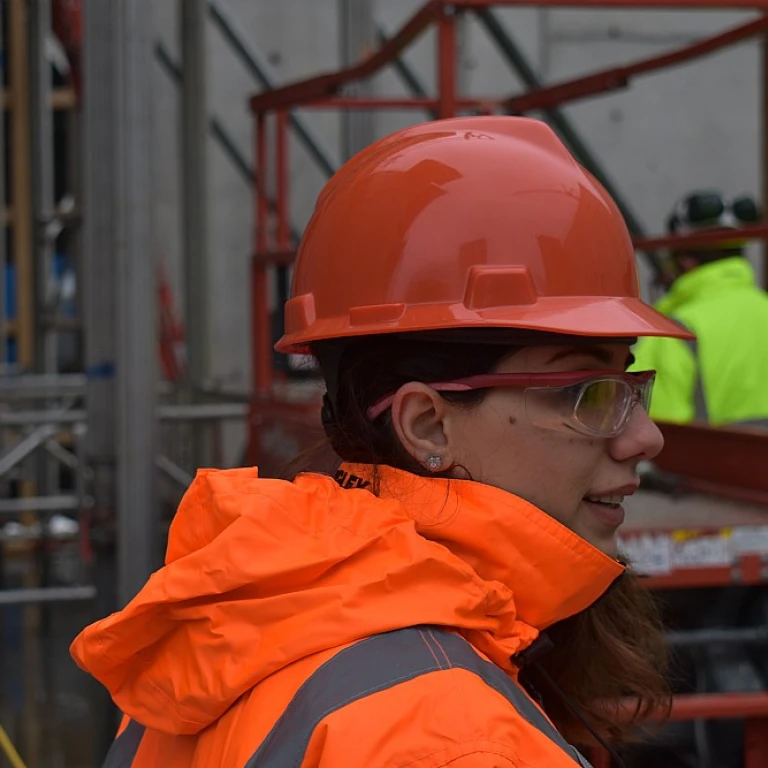Understanding Cultural Transformation
The Essence of Cultural Transformation
Transforming company culture is a profound and ongoing journey that businesses undertake to align their internal practices and values with their strategic goals. But what does cultural transformation truly mean? In essence, it involves reshaping the shared beliefs, behaviors, and systems within an organization to create a work environment that supports and drives success.
At its core, cultural transformation seeks to build a cohesive and thriving workplace where teams can collaborate effectively, innovation flourishes, and employee satisfaction is prioritized. This process is not merely about instituting change for change's sake; it's about realizing the long-term benefits that arise from a supportive and dynamic culture.
Why Prioritize Culture Change?
The business landscape is rapidly evolving, and companies must adapt to maintain their competitive edge. Organizational culture significantly impacts employee engagement, retention, and productivity. Therefore, neglecting culture could hinder a company's progress and put it at a disadvantage.
A well-executed culture transformation can lead to a more winning employee experience strategy, which in turn drives business growth and success. Employees are more likely to thrive in an environment that reflects their values and promotes a sense of belonging and purpose.
Building the Foundation
Before embarking on a cultural transformation journey, companies must first understand their current cultural landscape. This involves identifying existing strengths and areas that require improvement. Understanding where your company stands will help in setting clear and realistic goals for transformation.
Additionally, it’s essential to recognize that cultural change is not a one-size-fits-all solution. Each organization has its unique set of challenges and opportunities. Adapting strategies to fit your company's specific needs is vital to ensure the transformation is effective and sustainable.
Identifying the Desired Culture
Defining Your Ideal Organizational Environment
Identifying the desired culture is a crucial step in the journey toward transforming company culture. It involves envisioning what your organization should look like in the future and outlining how this desired cultural change aligns with your overarching business goals. Here are some key considerations to help you paint a clear picture of the culture you want:- Evaluate Core Values: Begin by re-assessing the organizational core values. Are they still relevant and reflective of the direction the company is heading? Core values form the foundation of an organization’s culture and should guide decision-making, conduct, and company priorities.
- Align with Strategic Objectives: How does the desired culture support the long-term objectives of the company? Your culture should be a strategic asset that enhances the company's ability to compete and adapt in an ever-changing business landscape.
- Consider Employee Well-being: A healthy work culture nurtures employee well-being by promoting a supportive and inclusive environment. Assess if your desired culture fosters not just professional development but also a strong sense of belonging and personal growth.
- Gather Insights: Engage employees across different levels to gather insights on what they believe the ideal culture should be. This process not only helps in shaping a realistic and achievable cultural vision but also ensures that employees feel invested in the cultural journey. For more in-depth strategies on enhancing employee engagement, you might find value in an employee experience strategy.
- Benchmark Against Industry Leaders: Look at successful companies in your industry and how their culture has been a catalyst for their success. While every company's cultural blueprint is unique, understanding what works well in your sector can offer valuable insights and inspiration.
Leadership's Role in Culture Change
The Power of Leadership in Cultural Shift
In any cultural transformation journey, the influence of leadership cannot be overstated. Leaders set the tone, set the pace, and create the momentum required for a successful transition. They act as the culture's champions, aligning organizational goals with the desired cultural attributes. Setting Clear Expectations Leaders play a pivotal role in defining and communicating clear expectations concerning the cultural change. This involves outlining not just the 'what' but also the 'why' of the transformation. By articulating a compelling vision that aligns with the company's objectives, leaders help employees understand the significance and purpose behind the shift. Modeling the Desired Behaviors Leaders must lead by example, embodying the values and behaviors that reflect the new culture. Their actions serve as a powerful blueprint for others to follow. When leaders consistently demonstrate the desired behaviors, it sends a strong message throughout the organization, reinforcing the importance of commitment and consistency in cultural transformation. Providing Continuous Support Change is often met with resistance, and leaders are crucial in addressing this challenge. They need to provide ongoing support and resources to facilitate the transition. Encouragement through regular feedback, training sessions, and motivational initiatives ensures that employees feel equipped and supported during the cultural shift. Engaging Employees An essential aspect of leadership in culture transformation is actively engaging employees throughout the process. This involves creating platforms for open communication, encouraging input, and fostering a sense of ownership. When employees feel involved and valued, their engagement levels rise, and the transformation becomes a collective effort. For more on enhancing employee engagement during cultural shifts, check out this insightful article: boosting employee engagement. With the right leadership in place, organizations can effectively navigate the challenges of transforming company culture and move towards achieving a thriving, cohesive workplace environment.Engaging Employees in the Transformation Process
The Heart of Change: Employee Involvement
Transforming company culture isn’t just a top-down initiative. It’s crucial to involve employees at every level to truly embed the new culture into the fabric of the organization. When employees feel both motivated and empowered to contribute to the transformation, they become champions of the change rather than mere participants.Open and Consistent Communication
Communication is key. It should be transparent, frequent, and engaging. Employees need to know why the transformation is happening, what the desired outcomes are, and how they fit into the bigger picture. Regular updates and an open line for feedback can help keep everyone on the same page and enthusiastic about the journey.Creating a Safe Environment for Feedback
An open culture encourages feedback, both positive and constructive. Encourage employees to share their thoughts and experiences with the cultural transformation process. This can be achieved through anonymous surveys, feedback sessions, or one-on-one meetings. By fostering a safe space for honest feedback, you allow for adjustments that can lead to more effective implementation.Incentives to Drive Engagement
To encourage active participation, consider implementing a system of recognition and rewards. Highlighting individual or team contributions towards the new culture not only boosts morale but also reinforces the behaviors and values you are trying to cultivate.Empower Cross-Functional Teams
Cross-functional teams can break down silos and facilitate an exchange of diverse ideas, making the cultural transformation more comprehensive and inclusive. Empower these teams to take initiative in devising creative solutions that align with the organization’s new cultural objectives. Engaging employees in the transformation process is not about enforcing change, but rather involving them in co-creating a shared vision for the future. By fostering participation and embracing feedback, organizations can ensure that the evolution of their company culture is meaningful, effective, and persistent.Steps for a Successful Cultural Transformation
Implementing Clear and Strategic Steps
To successfully transform your company culture, having a clear roadmap is crucial. This plan should involve both short-term and long-term actions that drive the organization towards the identified desired culture.- Begin with a comprehensive assessment of your current culture and compare it to the desired state. This helps in understanding the gaps and areas demanding attention.
- Communicate a clear and compelling vision for the cultural transformation. Employees should know what changes are being made and why, aligning with leadership's role in advocating for this vision.
- Develop initiatives that support the intended changes. This could involve redesigning office spaces to promote collaboration or incorporating new communication channels that enhance transparency.
Training and Development
Invest in training programs that equip employees and leaders with the skills and behaviors necessary for the transformation.- Training sessions should focus on promoting the values and behaviors that align with the new culture.
- Offer workshops that emphasize empathy, inclusion, and innovation to foster a more dynamic and inclusive workplace.
- Regularly assess the effectiveness of these programs and adapt them based on feedback and the changing needs of the organization.
Consistency and Reinforcement
Ensure that the messages and interventions around cultural change remain consistent over time.- Leadership must continuously demonstrate commitment to the new culture in their actions and decisions.
- Recognize and reward employees who embody the desired cultural values, reinforcing positive behavior throughout the organization.
Feedback and Adaptation
Establish mechanisms to regularly collect feedback from employees on the cultural change process.- Use surveys, focus groups, and one-on-one meetings to gather insights into how the changes are being received.
- Be prepared to adjust strategies based on this feedback to ensure the transformation process remains relevant and effective.
Measuring and Sustaining Cultural Change
Evaluating Impact and Progress
A vital step in ensuring the longevity and effectiveness of any cultural transformation initiative involves measuring the impact of the changes made. Understanding how these alterations have touched every facet of the company guides the direction for future endeavors. Organizations can utilize various metrics, assessments, and feedback loops to gauge progress.- Employee Feedback and Satisfaction Surveys: Regularly conducting surveys allows employees to express their thoughts and feelings about the cultural changes. This feedback provides valuable insights into areas that may require further attention or adjustments.
- Performance Metrics: Monitoring performance metrics aligned with the newly adopted culture is crucial. Evaluate whether the changes are positively influencing productivity, teamwork, and overall performance.
- Retention Rates and Employee Turnover: An improved company culture should theoretically contribute to lower turnover rates. Tracking this data can help determine whether the cultural shift is having the desired effect on employee retention.
Ensuring Long-term Success
Achieving cultural transformation is not sufficient alone; it's equally critical to maintain and nurture the evolving culture to prevent regression back to old practices and mindsets.- Continued Leadership Commitment: As emphasized in the section about leadership's pivotal role, ongoing commitment from top-tier executives is vital. Leaders must consistently model the cultural values they wish to see upheld throughout the organization.
- Ongoing Employee Engagement: Cultural transformation thrives when employees feel engaged and included in the process. Continuously encouraging their active participation ensures that the company culture remains dynamic and relevant.
- Regular Reassessment: Cultures are not static. Regularly reassessing your company culture and its alignment with business goals helps maintain momentum and adaptability in a rapidly changing environment.
Adapting and Addressing Challenges
Adopting an iterative approach can aid in heading off unforeseen challenges that may arise after the initial transformation phase.- Open Communication Channels: Establishing clear pathways for open and honest communication allows issues to be addressed promptly, before they escalate.
- Flexibility and Responsiveness: Being open to making adjustments as necessary is important for sustaining cultural transformation. This adaptability can help overcome hiccups and setbacks as they appear.








